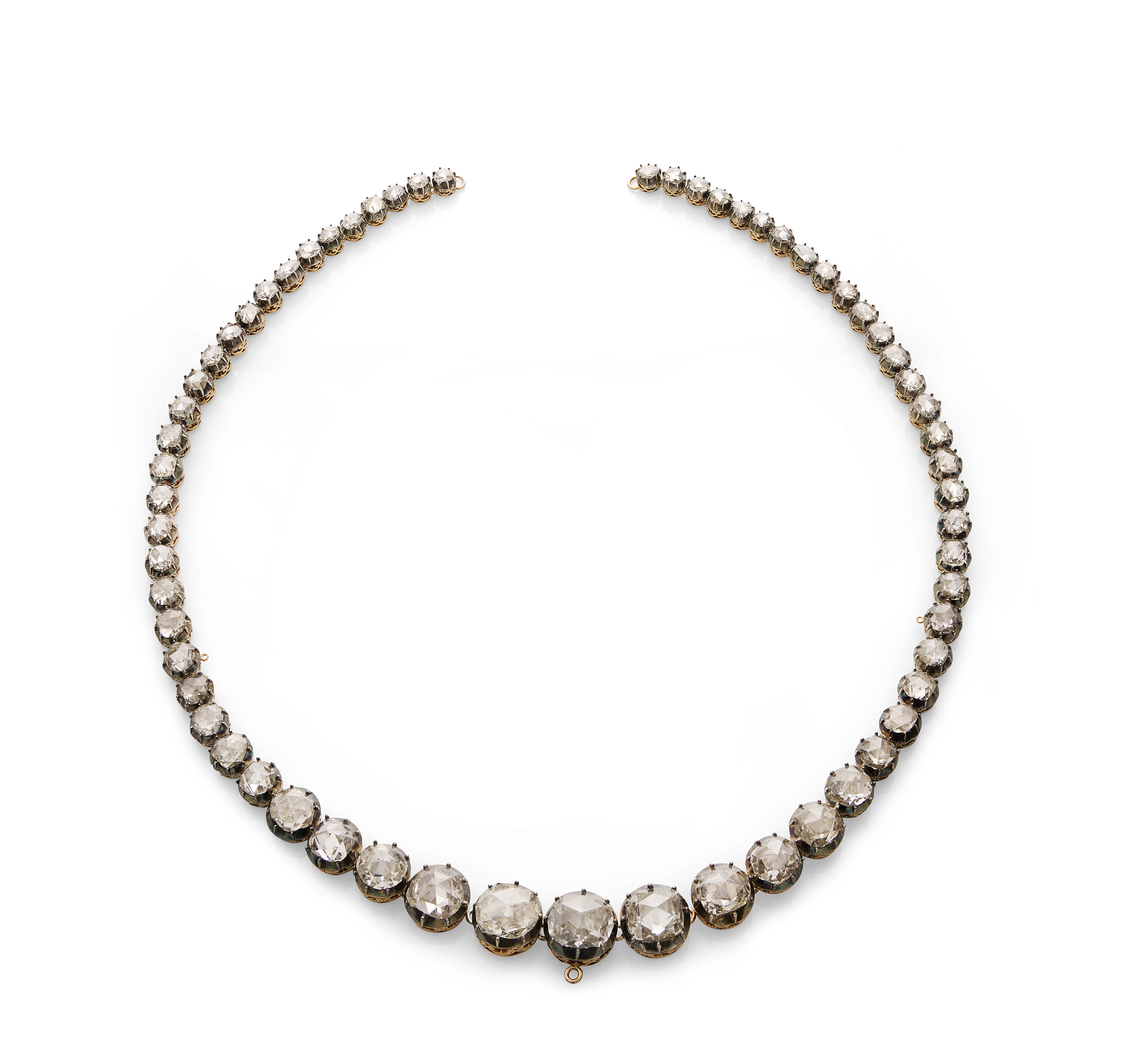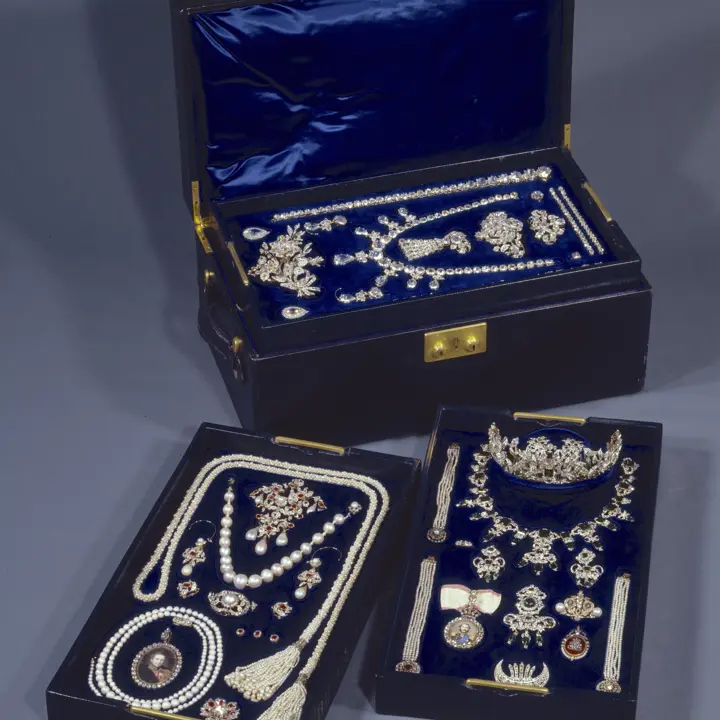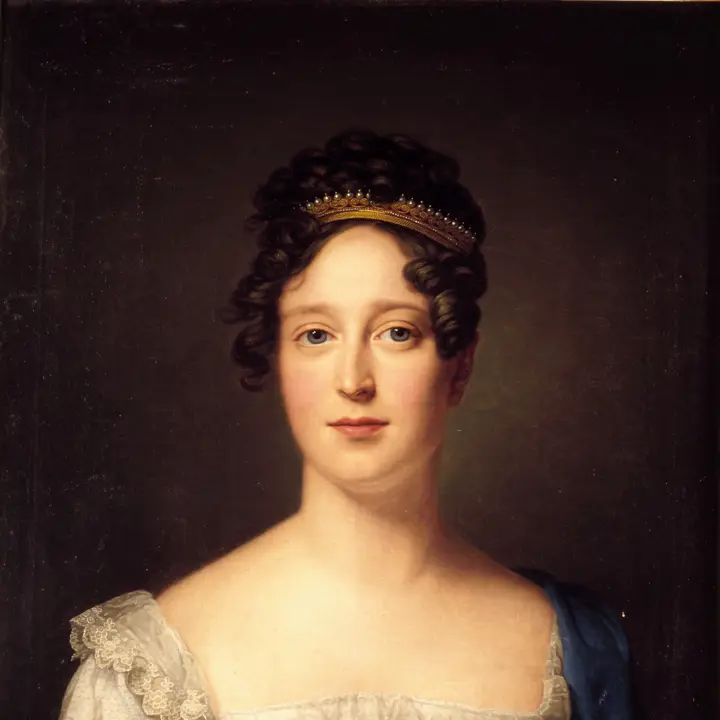The necklace is a belt
The Rose-Cut Diamond Set does not appear to show up in the preserved bills from the jewellery firm C.M. Weisshaupt und Söhne, which in 1840–42 mounted the Danish crown jewels in their current fittings.
For decades, the set was viewed as a long necklace with a corsage (brooch). Finally, however, it was linked to a bill from the jewellery firm, dated 29 March 1842. The bill mentions a belt, which turns out to be the actual purpose of the presumed necklace.
The Rose-Cut Diamond Set is intended as a chain to be worn around a woman’s corseted waist with the large pendant, the corsage, in the centre. The pendant can be broken up and worn as two separate pieces.
Stitched onto the dress
Right up to the time of the First World War, Danish queens wore a corset to achieve the fashionable hourglass figure. Even so, however, the belt was not intended to go all the way around the waist. Tiny loops distributed along the length of the belt and at the ends reveal that it was probably stitched onto the dress.
In Queen Caroline Amalie’s time, in addition to the narrow waist, fashionable dresses often included a long train. Fastened on the back, the train would cover this part of the waist, so the belt was only meant to decorate the front of the dress.
Queen Lovisa knew that the chain was intended as a belt. We can see this in a large portrait that shows her wearing it around her waist. Lovisa took great interest in the crown jewels and used loose pearls and precious stones to create additional pieces for the collection. Today, this jewellery is on display at the Amalienborg Museum.







